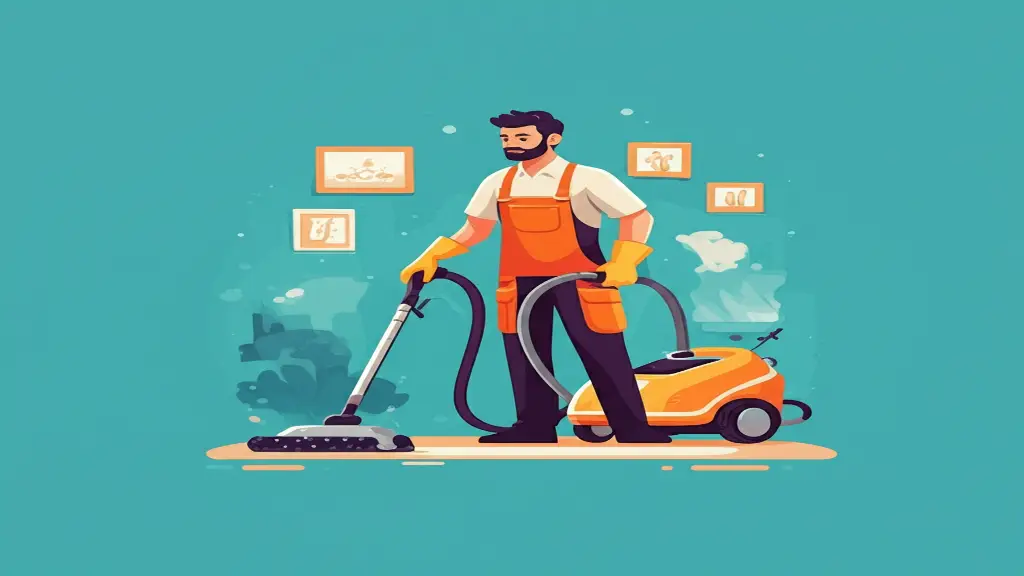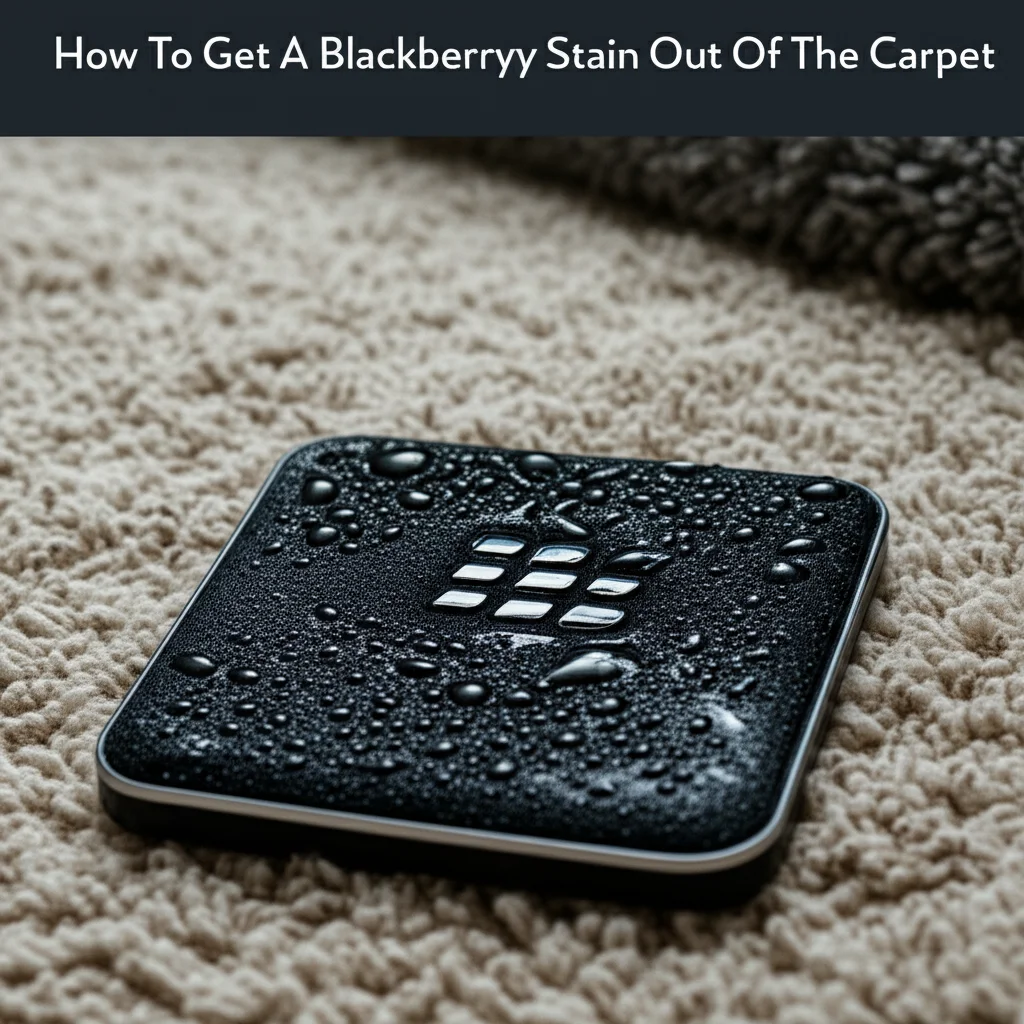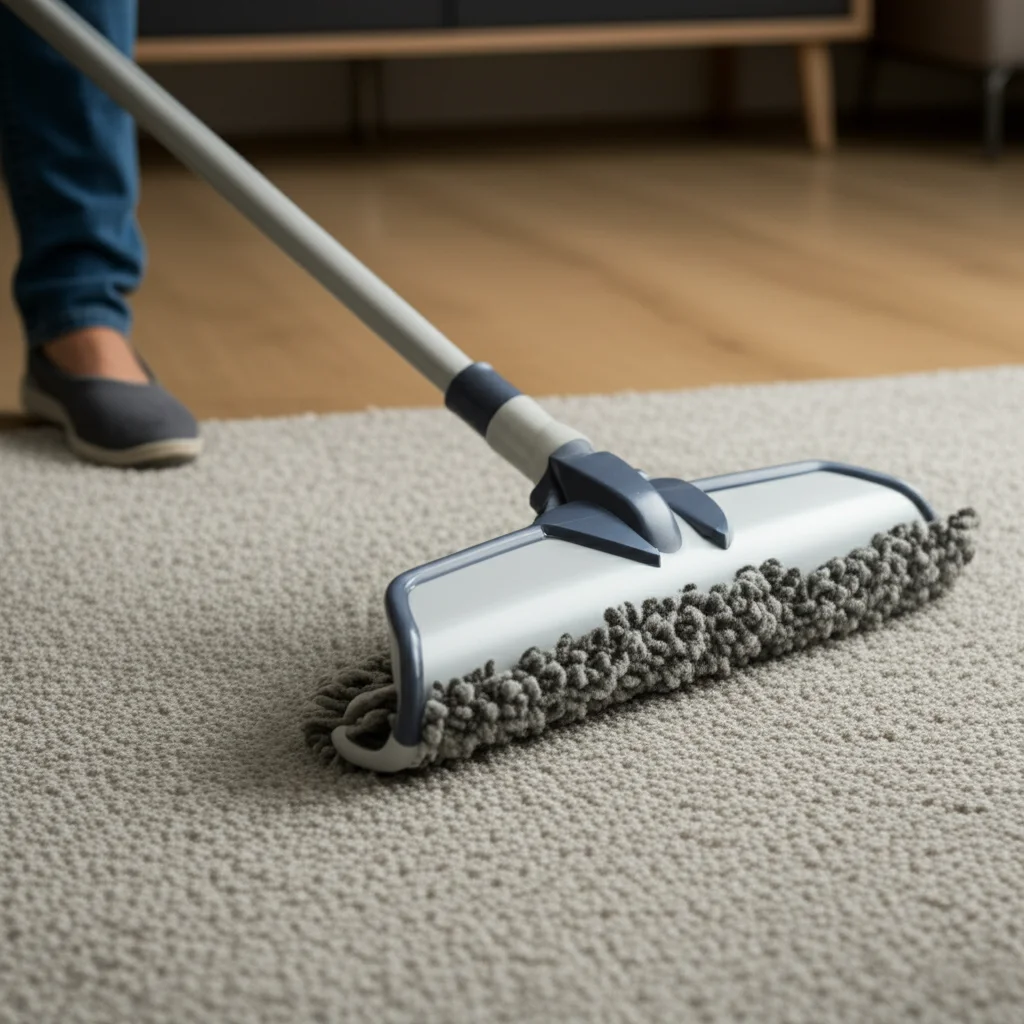· Katria Melrose · Home Care · 13 min read
How Carpet Cleaning Works

How Carpet Cleaning Works: Your Guide to a Fresher Home
Do you ever wonder how carpet cleaning works to transform dirty, stained floors into fresh, vibrant ones? We often overlook our carpets, but they collect a surprising amount of dust, allergens, and grime. Over time, this buildup affects your home’s air quality and the carpet’s appearance. Understanding the science and methods behind how carpet cleaning works can help you make informed decisions. This guide explores different carpet cleaning techniques, their benefits, and how they bring new life to your carpets.
Takeaway:
- Carpet cleaning uses various methods to remove embedded dirt and stains.
- Each method targets specific types of dirt or carpet fibers.
- Regular cleaning improves air quality and extends carpet life.
Carpet cleaning works by applying a cleaning solution to the carpet fibers, agitating the dirt loose, and then extracting the dirty solution and debris. The specific process depends on the method used, but the goal remains the same: to remove contaminants and restore the carpet’s appearance.
Understanding Your Carpet: Fibers and Dirt
Before we dive into how carpet cleaning works, it helps to understand what makes up your carpet and the types of dirt it collects. Carpets are not just flat surfaces. They consist of millions of tiny fibers woven together. These fibers can be natural, like wool, or synthetic, such as nylon, polyester, or olefin. Each fiber type reacts differently to water and chemicals.
Dirt found in carpets falls into a few categories. Dry soil, like dust, sand, and pet dander, makes up most of the debris. These particles get trapped deep within the carpet pile. Oily soils come from food spills, skin oils, or tracked-in grease. These cling to fibers and attract more dry soil. Lastly, various stains from spills, pet accidents, or tracked-in mud contribute to a carpet’s dirty appearance. Knowing these factors helps determine the best cleaning approach. Understanding your carpet’s material is key to choosing the right cleaning method. Using the wrong products or techniques can damage fibers or leave behind residues.
The amount of dirt your carpet holds might surprise you. Regular vacuuming helps with surface dirt. However, it cannot reach embedded particles or break down oily residues. This deeper dirt compacts and abrades carpet fibers over time. This makes your carpet look dull and worn out. Proper cleaning methods address these deeper issues. They lift out stubborn dirt and refresh the carpet’s texture. Always check your carpet’s care label or manufacturer recommendations before cleaning. Different carpets require different levels of moisture and chemical types.
Hot Water Extraction: The Power of Steam Cleaning
Hot water extraction, often called steam cleaning, is a popular and effective method. It is considered one of the deepest cleaning processes. This method works by injecting hot water and a cleaning solution deep into the carpet fibers. A powerful vacuum then extracts the water, solution, and dissolved dirt. This process flushes out embedded grime and residues.
The hot water helps to break down stubborn dirt and kill bacteria. The high-pressure spray ensures the solution reaches the base of the carpet fibers. The immediate vacuuming prevents the carpet from becoming oversaturated. This reduces drying time and prevents mold growth. Many professional carpet cleaners use this method. It is highly effective for heavy soiling and removing allergens. For a truly thorough clean of an entire room, hot water extraction is often the go-to. If you want to know how to keep your carpet clean generally, understanding this deep cleaning method is a great start.
This method is suitable for most synthetic carpets. However, it requires careful application on natural fibers like wool, which can shrink or get damaged by excessive heat or moisture. Professionals adjust water temperature and pressure based on the carpet type. This ensures safe and effective cleaning. The drying time for hot water extraction can range from 6 to 24 hours. Good ventilation helps speed up this process. Professional equipment provides stronger suction. This means less residual moisture left in the carpet. This is why professional services often yield better results and faster drying compared to rental machines.
Dry Carpet Cleaning Methods
Dry carpet cleaning methods offer an alternative for carpets that cannot tolerate much moisture. These methods use minimal to no water. This significantly reduces drying time, often allowing carpets to be used immediately. This makes them ideal for commercial spaces or areas with high traffic. There are a few main types of dry cleaning. Each works differently to remove dirt without heavy wetting.
One common dry method uses a cleaning compound. This compound looks like tiny, absorbent particles or powder. It contains solvents and detergents. You spread this compound over the carpet. It then absorbs dirt and spills on contact. A rotating brush machine works the compound into the fibers. This allows it to encapsulate the dirt. After a short dwell time, a powerful vacuum removes the compound along with the trapped dirt. This method leaves carpets dry and ready for use almost immediately. It is great for maintaining the appearance of carpets regularly.
Another dry method is called “bonnet cleaning.” While not entirely dry, it uses very little moisture. A cleaning solution is sprayed onto the carpet. A rotary machine with a large, absorbent pad, or “bonnet,” then buffs the carpet surface. The bonnet rotates, absorbing dirt from the top layer of fibers. This method is fast and effective for light cleaning and surface refreshing. It is not a deep cleaning method, however. It mainly targets the surface and can cause dirt to wick back up from deeper in the carpet later. Still, for quick touch-ups or between deep cleans, bonnet cleaning can be very useful. It’s important to understand these methods if you’re trying to figure out how carpet cleaning works for different situations.
Encapsulation Carpet Cleaning: A Modern Approach
Encapsulation carpet cleaning is a relatively newer method gaining popularity. It falls between hot water extraction and purely dry methods. This technique uses a special cleaning solution that contains polymers. When sprayed onto the carpet, this solution surrounds dirt particles. It crystallizes them into tiny, non-sticky beads as it dries. This process literally “encapsulates” the dirt.
Once the solution dries and encapsulates the dirt, the crystallized particles are easily removed. A regular vacuum cleaner can then pick them up. The key advantage of encapsulation is its low moisture use and fast drying time. Carpets are typically dry within 1-2 hours. This method is also eco-friendly, as it uses less water and often biodegradable chemicals. It leaves no sticky residue, which can attract new dirt. This means carpets stay cleaner for longer periods.
Encapsulation works well for commercial settings and routine maintenance. It offers a good balance between deep cleaning and quick drying. While it may not remove deeply embedded dirt as effectively as hot water extraction, it significantly improves carpet appearance and hygiene with minimal downtime. It is particularly good for maintaining high-traffic areas. The encapsulated dirt does not get left behind. It becomes easy to remove with standard vacuuming. This keeps carpets looking fresh between more intensive cleanings. This method highlights an evolving understanding of how carpet cleaning works more efficiently.
Spot Cleaning and Pre-treatment Techniques
Understanding how to tackle specific stains and preparing your carpet before a full cleaning are crucial steps. Spot cleaning addresses individual spills or marks. Pre-treatment prepares heavily soiled areas for a deeper clean. Both methods play a vital role in maintaining your carpet’s appearance and longevity. Acting quickly on spills is always best to prevent them from setting into permanent stains.
When a spill occurs, the first step is often to blot the area. Use a clean white cloth or paper towel. Blot, do not rub, to avoid spreading the stain or damaging the carpet fibers. Different types of stains require different spot cleaning solutions. For example, a mixture of water and vinegar can often help with common spills. If you are dealing with pet accidents, specific enzyme cleaners are best. These break down the organic matter. For tough marks, knowing how to spot clean carpet effectively can save your floor. If you have an old stain, or something like pet urine, there are dedicated solutions available. Products for how to clean old stains from carpet or how to clean pet urine from carpet often contain specialized enzymes.
Pre-treatment is essential for heavily soiled areas or stubborn stains before a full carpet cleaning. This involves applying a specialized cleaning solution to the affected areas. The solution breaks down the dirt and allows it to be more easily removed during the main cleaning process. Think of it as loosening the grip of dirt particles on the carpet fibers. High-traffic lanes, entryways, and areas under furniture often benefit from pre-treatment. This step ensures an even clean across your entire carpet. Proper pre-treatment makes the main cleaning method more effective. It also reduces the need for aggressive scrubbing that could damage carpet fibers.
Professional vs. DIY Carpet Cleaning
When it comes to how carpet cleaning works, you have two main options: hiring professionals or doing it yourself. Both have their advantages and disadvantages. Choosing the right path depends on your carpet’s condition, your budget, and your comfort level. Understanding these differences can help you decide what is best for your home.
Professional carpet cleaners use powerful, truck-mounted machines. These machines provide superior suction and heat. They can extract much more dirt and moisture than consumer-grade machines. Professionals also have training in identifying different carpet types and stain origins. They select the best cleaning solutions and techniques. This results in a deeper clean, faster drying times, and reduced risk of damage. For deep-seated dirt, extensive staining, or specific concerns like removing pet dander, professional service is often the better choice. They also understand how to deal with chemicals safely. This includes considerations like can a kid be around chemical carpet cleaning?
DIY carpet cleaning involves renting or buying a machine. These machines are less powerful but can still provide a good clean for light to moderate soiling. Doing it yourself saves money, especially for smaller areas or frequent touch-ups. However, DIY cleaning requires more effort and knowledge. You need to understand how to operate the machine, choose the right cleaning solutions, and ensure proper drying. Over-wetting the carpet is a common DIY mistake. This can lead to mold growth or damage. If you’re wondering how to deep clean carpet without a machine, that’s another entirely different, more labor-intensive approach. For basic refreshing or routine maintenance, DIY can be a viable option. For tackling a whole room of carpet or removing old, stubborn stains, professional help might be more effective.
Maintaining Your Carpet After Cleaning
Once your carpet is clean, maintaining its freshness and extending its life is important. Proper post-cleaning care and regular habits prevent rapid re-soiling. This also keeps your home healthier. A clean carpet improves indoor air quality. It looks better and lasts longer. Following a few simple steps ensures your efforts last.
- Allow Full Drying: Ensure your carpet is completely dry before walking on it heavily or placing furniture back. Walking on a damp carpet can re-soil it quickly. It can also cause mold or mildew growth. Use fans or open windows to improve ventilation and speed up drying.
- Regular Vacuuming: Vacuum your carpet frequently, at least 1-2 times a week. This removes surface dirt and prevents it from settling deep into the fibers. Use a vacuum cleaner with strong suction and a good brush agitator.
- Prompt Spot Treatment: Address spills immediately. Have a spot cleaner ready for quick action. Blot, do not rub, to remove fresh spills. Knowing how to spot clean carpet quickly is crucial for preventing permanent stains.
- Use Area Rugs and Mats: Place mats at entryways to trap dirt before it reaches your carpet. Use area rugs in high-traffic zones to protect the underlying carpet.
- No Shoes Policy: Consider implementing a “no shoes” policy inside your home. Shoes track in significant amounts of dirt, dust, and pollutants.
- Professional Cleaning Schedule: Schedule professional carpet cleaning regularly, usually every 12-18 months. This depends on traffic and household activity. This ensures deep cleaning and removal of embedded dirt that vacuuming cannot reach. Professional cleaning removes allergens and extends the carpet’s lifespan.
By following these maintenance tips, you can keep your carpets looking clean and feeling fresh for much longer. Regular care reduces the need for frequent deep cleaning. It protects your investment in your home. This approach ensures you get the most out of how carpet cleaning works to your benefit.
FAQ Section
How long does carpet cleaning take to dry?
Drying time depends on the cleaning method and humidity. Hot water extraction can take 6-24 hours. Dry cleaning methods allow immediate use. Encapsulation cleaning typically dries in 1-2 hours. Good ventilation and air circulation speed up the process. Always ensure carpets are fully dry before heavy use.
Is professional carpet cleaning worth it?
Yes, professional carpet cleaning is often worth the investment. Professionals use powerful equipment and specialized solutions. They provide a deeper clean than DIY methods. They also remove more embedded dirt, allergens, and stubborn stains. This extends the carpet’s life and improves indoor air quality.
Can carpet cleaning remove all stains?
Carpet cleaning can remove many stains, but not all. The success rate depends on the stain type, how long it has been there, and the carpet fiber. Newer, water-soluble stains are easier to remove. Older, oil-based, or dye-based stains are more challenging. Prompt action increases the chances of full removal.
How often should I clean my carpets?
The frequency depends on household activity. For average homes with pets or children, professional cleaning every 12-18 months is recommended. Homes with less traffic might need cleaning every 18-24 months. Regular vacuuming and spot cleaning help maintain cleanliness between professional services.
What are the benefits of regular carpet cleaning?
Regular carpet cleaning offers many benefits. It removes dirt, dust, and allergens, improving indoor air quality. It extends the life of your carpet by preventing fiber damage from abrasive particles. Cleaning restores your carpet’s appearance, making it look vibrant and fresh. It also eliminates odors and bacteria.
Conclusion
Understanding how carpet cleaning works reveals a range of effective methods to keep your home’s carpets clean and healthy. From deep hot water extraction to quick-drying encapsulation, each technique offers specific benefits. Regular cleaning removes unseen dirt and allergens. It also extends the life of your carpet and improves your home’s air quality. We have explored the different processes involved, the importance of pre-treatment, and the value of professional services.
By choosing the right method for your needs and maintaining a consistent cleaning routine, you can ensure your carpets remain a comfortable and attractive part of your living space. Don’t let dirt and grime accumulate. Invest in your carpet’s health. Your home will feel fresher, look better, and provide a healthier environment for everyone. Take the next step to a cleaner home today!





